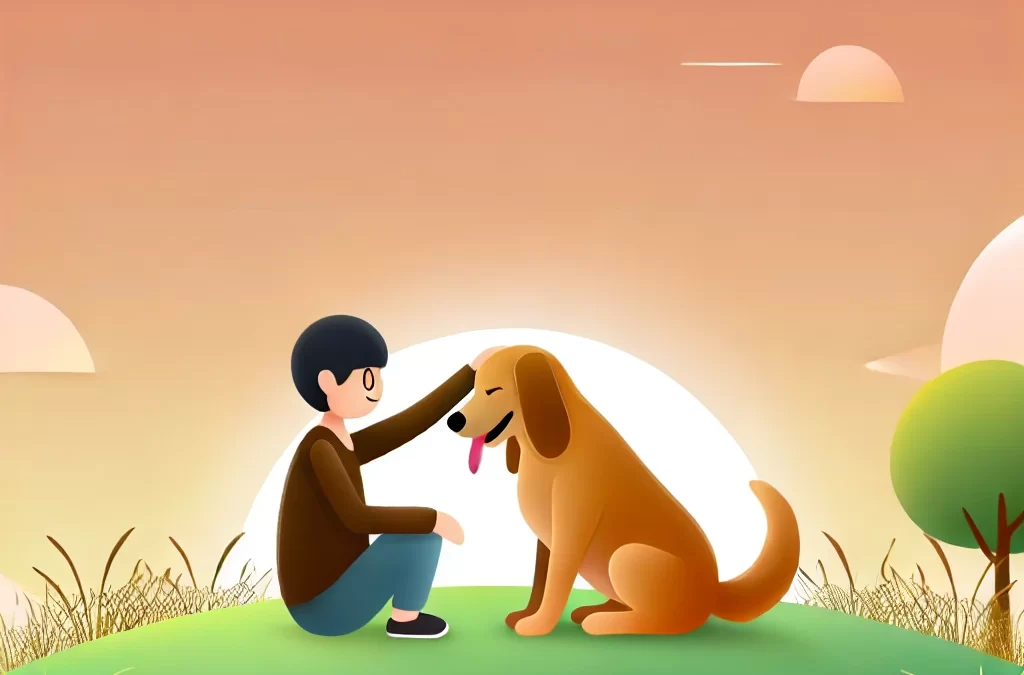Decyzja, kiedy pożegnać się z ukochanym psem, u którego zdiagnozowano raka, jest jedną z najtrudniejszych decyzji, przed jaką stanie właściciel zwierzęcia. Chociaż każdy przypadek jest inny, ten artykuł oferuje alternatywną perspektywę na ten emocjonalnie nacechowany temat — skupiając się na miłości, jakości życia i tworzeniu znaczących wspomnień przed puszczeniem go.
Zrozumienie podróży Twojego psa
Psy chore na raka, podobnie jak ludzie, doświadczają szeregu stanów fizycznych i emocjonalnych. Zrozumienie ich stanu może pomóc Ci podejmować świadome decyzje:
- Poziomy bólu: Ból jest często pierwszym wskaźnikiem. Pomimo postępów w opiece paliatywnej, niektóre psy mogą odczuwać uporczywy dyskomfort.
- Problemy z mobilnością: Obserwuj, czy Twój pies nadal może cieszyć się aktywnościami takimi jak spacery lub zabawa. Utrata mobilności może oznaczać spadek jakości jego życia.
- Zmiany apetytu: Nagła odmowa jedzenia lub picia może oznaczać, że organizm przestaje działać.
- Zmiany emocjonalne: Psy są emocjonalnymi stworzeniami. Zwróć uwagę, czy Twój pies wydaje się wycofany, niespokojny lub niezainteresowany otoczeniem.
Nowe ramy: podejście „Pięciu radości”
Zamiast skupiać się wyłącznie na spadku, rozważ to podejście, aby ocenić jakość życia swojego psa. Zapytaj siebie:
- Jedzenie: Czy Twój pies nadal lubi swoje ulubione jedzenie?
- Komfortowy sen: Czy odpoczywają bez oznak bólu lub niepokoju?
- Interakcja społeczna: Czy szukają towarzystwa, czy lubią być głaskane?
- Gra: Czy angażują się w swoje ulubione zajęcia, nawet w ograniczonym zakresie?
- Eksploracja: Czy interesują się swoim otoczeniem?
Kiedy stale brakuje trzech lub więcej z tych przyjemności, może to być właściwy moment, aby rozważyć eutanazję.
Pożegnanie: holistyczne podejście
Pożegnanie nie musi być nagłym końcem rozdziału. Oto sposoby, aby uczcić podróż psa, jednocześnie ułatwiając przejście:
- Utwórz listę rzeczy do zrobienia
Świętuj życie swojego psa, tworząc chwile radości. Może to być coś tak prostego jak piknik w jego ulubionym parku lub dzielenie się specjalnym smakołykiem. - Skup się na komforcie
Zapewnij spokojne, znajome otoczenie. Użyj przytulnej pościeli, delikatnych masaży i aromaterapii, aby złagodzić stres. - Skontaktuj się z weterynarzem, któremu ufasz
Współczujący weterynarz pomoże Ci rozpoznać oznaki pogarszającego się stanu zdrowia zwierzęcia i zaplanować spokojne odejście. - Rozważ eutanazję domową
Wielu właścicieli zwierząt decyduje się na eutanazję w domu, pozwalając psu odejść w znanym mu otoczeniu, w otoczeniu bliskich. - Zachowaj ich dziedzictwo
Stwórz pamiątkę, taką jak odcisk łapy lub album ze zdjęciami. Może to pomóc Ci przetworzyć żal, jednocześnie świętując życie Twojego psa.
Nowe zdefiniowanie ostatecznego pożegnania
Eutanazja to nie tylko decyzja kliniczna — to akt miłości. Decydując się na pokojowe odejście psa, oszczędzasz mu niepotrzebnego cierpienia i szanujesz jego godność. Zamiast skupiać się na tym, „kiedy puścić”, zmień perspektywę na to, „jak nadać jego ostatnim chwilom znaczenia”.
Wnioski: Można przeżywać żałobę
Żal jest naturalną częścią procesu. To dowód głębokiej więzi, jaką dzieliłeś ze swoim psem. Szukaj wsparcia u przyjaciół, rodziny, a nawet w internetowych społecznościach miłośników zwierząt, którzy rozumieją, przez co przechodzisz.
Ostatecznie decyzja jest głęboko osobista. Zaufaj swoim instynktom, uszanuj wyjątkową podróż swojego psa i wiedz, że miłość, a nie czas, definiuje twoją relację ze zwierzęciem.


